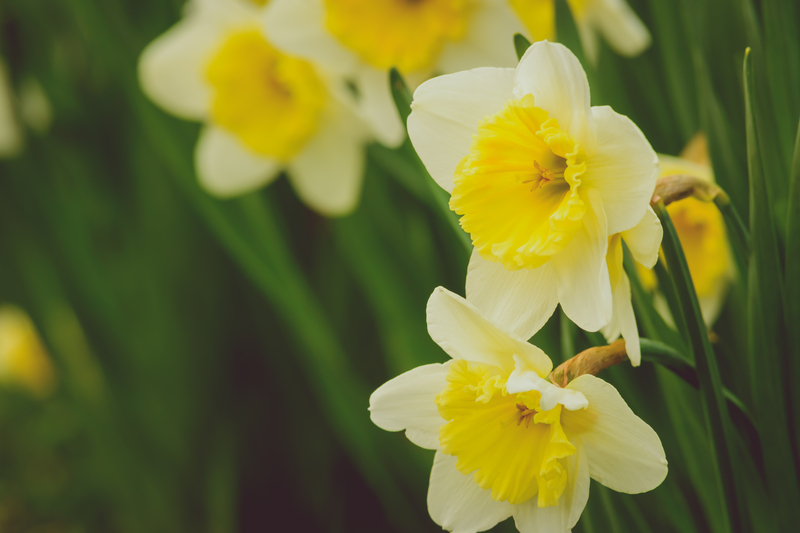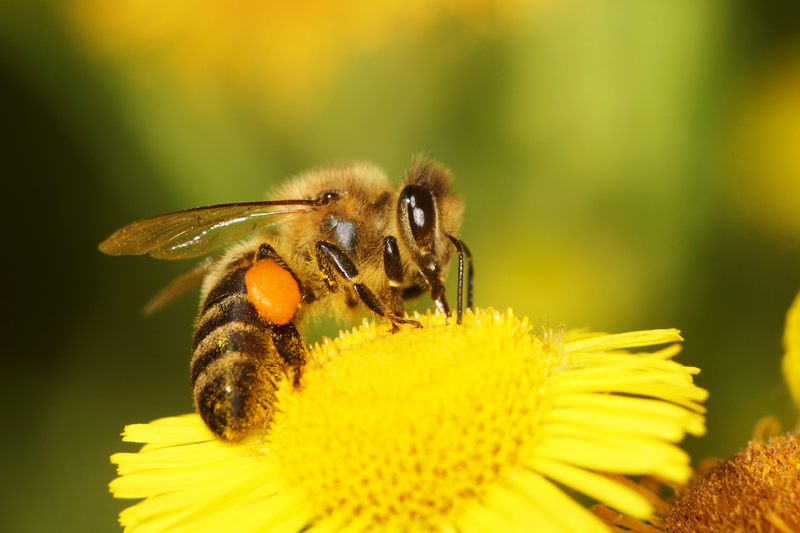Beginner Hacks for a Healthier, Greener Lawn
If you're just starting out on your journey to a lush, healthy, and greener lawn, you're in the right place! Cultivating the perfect yard may seem challenging, but it doesn't have to be. With a few simple tips, proper care, and smart strategies, anyone can transform their lawn into an enviable green oasis. Whether you're a complete novice or simply looking for fresh ideas, these beginner hacks for a healthier and greener lawn will set you on the right track.
Why Care About a Greener Lawn?
A lush and vibrant lawn isn't just about curb appeal. Healthy grass provides significant benefits for your home and the environment:
- Reduces soil erosion: Grass roots hold soil in place.
- Cools your surroundings: Lawns act as natural air conditioners.
- Improves air quality: Lawns absorb dust and carbon dioxide.
- Enhances mental well-being: Green spaces promote relaxation and happiness.
- Boosts property value: Attractive lawns make a great first impression.
Ready to revive your patchy, dull grass? Let's explore the best eco-friendly lawn care tips for beginners.

Essential Beginner Lawn Care Hacks
1. Understand Your Lawn's Needs
Every lawn is different. Start by knowing your grass type (cool-season or warm-season), soil condition, and sunlight exposure. Conducting a simple soil test with a kit from your local garden center will reveal vital information, such as pH level and nutrient deficiencies. Addressing soil health is the foundation for any greener lawn strategy.
- Soil pH: Most grasses thrive between 6.0 and 7.0 pH.
- Grass type: Identify if you have Kentucky Bluegrass, Fescue, Bermuda, or another variety. Each has its own optimal care routine.
- Sunlight: Map out sunny and shaded spots for effective planting.
2. Smart Mowing Practices
Mowing may seem straightforward, but how you mow can make or break a healthy lawn.
- Never cut more than 1/3 of the grass blade at once. Cutting too short, also known as scalping, stresses the grass and invites weeds.
- Keep your mower blades sharp for a clean cut. Dull blades tear the grass, making it susceptible to disease.
- Alter your mowing pattern regularly to prevent soil compaction and ruts.
- Leave the clippings: Grasscycling returns valuable nutrients back to the soil.
Pro Tip: Set your mower higher during dry spells to help grass retain moisture and shade roots.
3. Water Wisely for a Greener Lawn
Watering is a critical lawn care step, but more isn't always better. The secret is watering deeply and less frequently.
- Water in early morning (before 10 AM) to reduce evaporation and allow grass to dry before night.
- Soak to a depth of 6 inches to encourage roots to grow deep and resist drought.
- Avoid frequent light watering--it causes shallow roots and weakens your turf.
- Check for runoff. If water pools or runs off, split your watering into shorter sessions to help soil absorb it.
Tip: Place an empty tuna can on your lawn. When it fills to about one inch, you've watered enough!
4. Feed Your Lawn the Right Way
Fertilizing gives your grass the nutrients it needs to stay green and healthy, but timing and product selection are key.
- Use slow-release, organic fertilizers whenever possible. They're safer for kids, pets, and the environment.
- Fertilize in the growing season: For cool-season grasses, early spring and fall; for warm-season grasses, late spring through summer.
- Follow application instructions--more isn't better.
- Try compost top-dressing: Spread a thin layer of compost to boost soil health naturally.
Avoid "weed and feed" combos as a beginner--they often contain harsh chemicals and don't allow you to target specific concerns.
5. Overseed for Thicker Grass
Thin and patchy lawns are a common frustration. Overseeding--scattering new grass seed over existing turf-- is an easy hack for a fuller, greener lawn.
- Dethatch or lightly rake the lawn first to allow seeds to contact soil.
- Choose seed that matches your existing grass or your local climate.
- Water daily until new grass is established, then resume normal watering schedule.
- Overseed in early fall (for cool-season grasses) or late spring (for warm-season grasses) for best results.
6. Aerate Compact Soil
If your lawn gets heavy foot traffic or feels hard underfoot, the soil may be compacted. Aerating--removing small plugs of earth--lets air, water, and nutrients reach the roots.
- Use a manual or machine aerator for best results.
- Aerate once a year: Early fall for cool-season lawns, late spring for warm-season lawns.
- Combine aeration with overseeding for a double boost.
Looser soil equals deeper roots and a more drought-resistant, greener lawn.
7. Master Weed Prevention
Weeds are the ultimate enemy of a healthy lawn. For greener, weed-free turf, prevention is more effective than constant removal.
- Mow high: Taller grass shades out weed seeds.
- Overseed and fertilize: Dense, vigorous grass naturally crowds out weeds.
- Hand-pull weeds after rain when the soil is moist for easier removal.
- Use mulch or organic pre-emergent herbicides in garden beds and at lawn edges.
Avoid harsh chemicals--they can damage beneficial soil microbes and harm wildlife.
Eco-Friendly Lawn Care Tips for Beginners
Choose the Right Grass Seed
Choose climate-adapted, low-maintenance varieties for an environmentally friendly, greener lawn. Consider drought-tolerant or native grass species--they need less water and fertilizer.
Mulch Lawn Clippings and Leaves
Don't bag your clippings! Mulch them with your mower to naturally fertilize your lawn. Mulching leaf litter in autumn adds organic matter and suppresses weeds.
Go Organic
Organic solutions, from fertilizers to pest control, support a healthier soil ecosystem compared to synthetic chemicals. Compost, kelp meal, and corn gluten meal (a natural weed preventer) are beginner-friendly choices.
Set Up a Rain Barrel
Collecting rainwater is an easy way to conserve water and give your lawn a natural drink. It's better for the soil than treated tap water and reduces runoff.
Landscape with Pollinator-Friendly Plants
Border your lawn with native flowers, grasses, or groundcovers to attract pollinators and support biodiversity while enjoying a greener yard.
Avoid These Common Beginner Lawn Mistakes
- Overwatering or watering at the wrong time of day. This encourages shallow roots, fungal disease, and water waste.
- Applying too much fertilizer. Over-fertilizing causes chemical burn, weakens grass, and pollutes groundwater.
- Cutting grass too short, which invites weeds and stress.
- Ignoring soil health. Poor soil is the #1 reason lawns struggle.
- Using non-selective weed killer that damages both weeds and wanted grass.
Lawn Care Calendar for Beginners
Here's a basic year-round guide for a greener, healthier lawn:
- Spring: Test soil, apply fertilizer, overseed, and mow regularly. Spot treat for weeds.
- Summer: Mow high, water deeply but infrequently. Monitor for pests and drought stress.
- Fall: Aerate, overseed, apply compost, and clear leaves.
- Winter: Limit foot traffic, keep lawn free of debris, and plan for spring.

Frequently Asked Questions: Beginner Lawn Care Tips
How can I make my lawn greener naturally?
The key steps include building healthy soil, mowing correctly, watering efficiently, choosing the right fertilizer, and overseeding as needed. Using compost instead of chemicals is a natural hack for a greener lawn.
What's the quickest way to get rid of brown patches?
First, identify the cause--disease, pets, drought, or pests. Patch-seed bare areas, improve watering routines, and apply a thin layer of compost to support regrowth.
Can I start a new lawn without chemicals?
Absolutely! Organic lawn care for beginners includes using natural fertilizers, manual weed control, and native or drought-tolerant grass blends for sustainability.
Do I really need to aerate my lawn?
If your lawn feels spongy or water pools, yes! Aerating once a year boosts root health, reduces thatch buildup, and improves nutrient uptake.
Final Thoughts: Green and Healthy Lawns Made Simple
A healthier, greener lawn isn't about fancy chemicals or the latest gadgets--it's about building strong roots, encouraging soil health, and using eco-friendly practices from the start. With these beginner lawn care hacks, even new gardeners can enjoy lush turf without frustration.
Start with these basic hacks and tips, pay attention to your lawn's unique needs, and adjust your approach as you learn. Remember, the best yards are created over time--not overnight. With patience and consistency, you'll soon be reaping the rewards of a vibrant, green, and thriving lawn that's the envy of the block.
Ready to put these beginner hacks for a greener, healthier lawn into action? Your backyard oasis awaits!
```